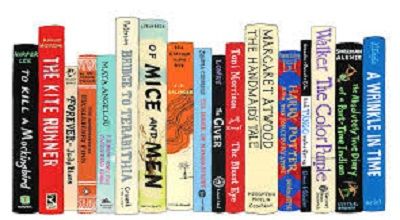Number of Banned Books in Education
The number of banned books in education can vary widely depending on the period and location. And specific policies of educational institutions or governing bodies. Banning books in education typically occurs due to concerns about their content, often related to controversial themes, language, or ideas.
The American Library Association (ALA) maintains a list of frequently challenged or banned books in the United States. However, the number of banned books can change from year to year and from place to place. Many books have been challenged or banned at some point in various school districts and libraries across the country.
It’s important to note that the Number of Banned Books in Education is a contentious issue. As it raises questions about censorship, freedom of speech, and the ability of students to access a diverse range of perspectives and ideas. Some people argue. That banning books can limit intellectual freedom and stifle open discourse. While others believe it is necessary to protect students from potentially harmful or inappropriate content. The number of banned books in education varies depending on the source and the period.
However, some common trends and findings are:
- PEN America, a nonprofit devoted to free expression, has compiled an Index of School Book Bans. That provides a comprehensive list of books banned in the 2021-2022 and 2022-2023 school years.
- PEN America found 3,362 instances of individual books banned, affecting 1,557 unique titles, in the 2022-2023 school year. This represents an increase of 33% from the 2021-22 school year. There were 2,532 instances of book bans, affecting 1,648 unique titles.
- The bans occurred in 33 states, with Florida leading the nation, according to PEN America’s latest Banned in the USA report.
- The most banned books of the 2021-2022 school year were George by Alex Gino, Stamped: Racism, Antiracism, and You by Jason Reynolds and Ibram X. Kendi, and Something Happened in Our Town: A Child’s Story About Racial Injustice by Marianne Celano, Marietta Collins, and Ann Hazzard.
- The most common reasons for book bans were related to sexuality and gender identity, race and racism, and profanity and violence.
- American Library Association (ALA) also tracks book challenges and bans in schools and libraries. According to ALA, a challenge is an attempt to remove or restrict materials. While a ban is the actual removal of those materials.
- ALA recorded 156 challenges to library materials or services in 2020 and 273 challenges in 2019. However, ALA estimates that 82-97% of challenges remain unreported.
- List of the ALA’s Top 10 Most Challenged Books of 2020 includes titles such as The Hate U Give by Angie Thomas. All American Boys by Jason Reynolds and Brendan Kiely, and the Harry Potter series by J.K. Rowling.
Why are these books banned?
These books are banned because some people or groups find them offensive, inappropriate, or harmful for various reasons. According to the web search results, some of the common reasons for book bans are:
- Sexuality and gender identity: Some books are banned because they depict LGBTQ+ characters or themes, which some people consider immoral, unnatural, or sinful. For example, George by Alex Gino is a children’s book about a transgender girl. Was the most challenging book of the 2021-2022 school year.
- Race and racism: Some books are banned because they address issues of racial injustice, discrimination, or oppression, which some people view as divisive, anti-American, or radical²⁴. For example, Stamped: Racism, Antiracism, and You by Jason Reynolds and Ibram X. Kendi, a book that explores the history and impact of racism in America, was the second most challenged book of the 2021-2022 school year.
- Profanity and violence: Some books are banned because they contain vulgar language, graphic scenes, or disturbing content. Which some people deem unsuitable for young readers or sensitive audiences²⁵. For example, The Hate U Give by Angie Thomas, a novel that deals with police brutality. And the Black Lives Matter movement was one of the most challenged books of 2020.
Final Words
These are not the only reasons for book bans, but they are some of the most prevalent ones in recent years. The number of Banned Books in Education often reflects the social and political conflicts of their time. As well as the values and beliefs of different communities. However, book bans also limit the diversity of perspectives and experiences that readers can access and learn from. Many advocates for intellectual freedom argue that book bans violate the right to free expression and information.
